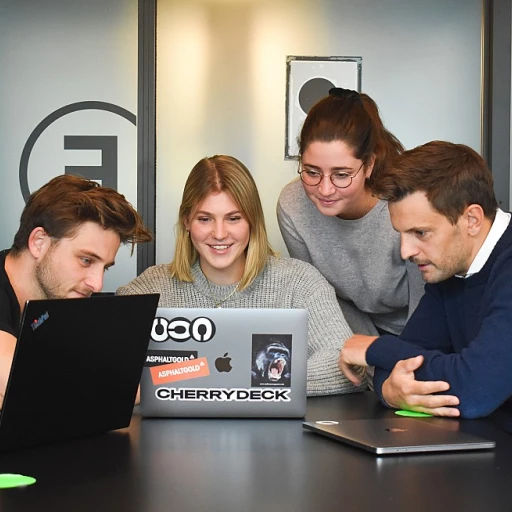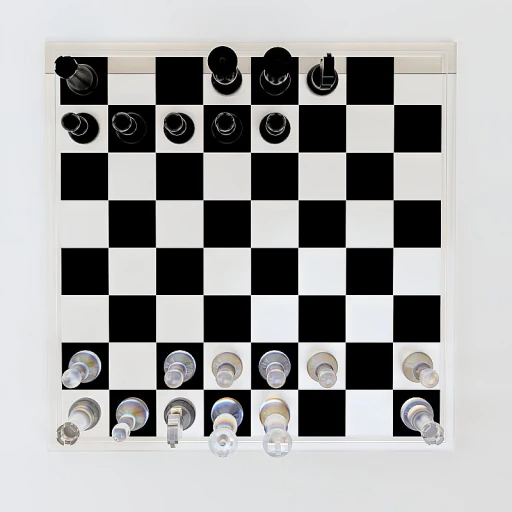
Understanding the Role of a Product Manager in Shopify
Navigating the Shopify Product Manager Role
To step confidently into the shoes of a Shopify Product Manager, it's crucial first to comprehend the multifaceted responsibilities inherent to the role. This understanding not only streamlines the interview process but also enhances your ability to communicate effectively about your skills and experiences. A Product Manager at Shopify is expected to balance various elements of product design and execution, integrating both business goals and user experience. From managing product development to ensuring seamless project management, the role demands a keen eye for detail and a strategic mindset. Product managers must demonstrate a proficient understanding of technical product aspects while navigating user experience considerations. This involves dissecting and interpreting complex data to drive decisions that align with the overall vision of the company. ### Core Responsibilities- User and Business Alignment: A successful product manager will expertly manage the trade-offs between user needs and business objectives, crafting a balance that leads to optimal product outcomes.
- Interdisciplinary Collaboration: Collaborating with cross-functional teams such as design, engineering, and marketing is essential. Effective communication within these teams is crucial for the development and launch of product designs.
- Problem-Solving Expertise: The ability to navigate through obstacles with innovative problem-solving skills is a hallmark of a seasoned Product Manager.
Key Interview Questions for Shopify Product Design
Diving into Essential Product Design Queries
Hiring the right Shopify Product Manager requires asking nuanced interview questions that delve into product design. Here are some key queries that will surface a candidate's comprehensive understanding and expertise. Understanding and Discussing Past Projects One effective approach is to inquire about previous product development projects. Questions may include:- Can you describe a project you led from concept to launch? What was your design process, and how did you integrate user feedback?
- How did you prioritize features, especially when faced with time constraints and management pressures?
- If you were given a product with declining user engagement, how would you approach solving this problem?
- Describe a situation where a technical product malfunction required immediate redesign and how you tackled it.
- How do you evaluate trade-offs when aligning product design with principal product strategies?
- What clarifying questions do you ask to ensure alignment with the company’s business objectives?
Analyzing Real-World Product Design Scenarios
Examining Practical Design Challenges
When stepping into a product design interview at Shopify, you’ll be presented with scenarios that test how you apply theoretical knowledge to practical challenges. Product managers are expected to seamlessly navigate between conceptual ideas and their real-world applications, ensuring they align with business goals. This is where your ability to analyze and solve real-world product design scenarios becomes crucial.
To assess your skills, an interviewer might present a hypothetical project and ask how you would approach its design and development. They aren’t just looking for technical prowess but are more interested in discovering how you balance trade offs, consider user data, and incorporate user experience principles.
Consider an example: you’re tasked with redesigning an existing Shopify product to enhance user engagement. Your interviewer might question how you’d use data to inform your design choices or manage a cross-functional team to execute your vision. The process you detail in your answer can reveal your problem solving skills and project management acumen.
To excel in this area, it’s vital to ask clarifying questions at the outset. These questions can help you gather all necessary information about the project, such as the target users, desired outcomes, and any constraints. Understanding the complete scope can guide you in crafting a well-informed and structured approach.
Moreover, this is an ideal moment to display your product sense by outlining the steps you would take through each stage of the design process—from ideation to prototyping, and eventually to testing and refinement. For better insights on ensuring precision and clarity during interviews, explore the importance of clarity in hiring decisions.
Evaluating Design Thinking and Problem-Solving Skills
Assessing Design Thinking in Product Interviews
In the competitive world of Shopify product management, evaluating a candidate's design thinking and problem-solving skills is crucial. These skills not only determine how a product manager approaches challenges but also how they innovate and create user-centric solutions. During the interview process, you can expect questions that delve into your ability to navigate complex scenarios and make informed decisions.
Exploring Problem-Solving Techniques
One of the key aspects interviewers look for is your problem-solving approach. They might present you with a hypothetical product design issue and ask how you would resolve it. This not only tests your technical product knowledge but also your ability to think critically under pressure. For instance, you might be asked to redesign a feature that isn't meeting business goals. Your response should highlight your understanding of the design process and how you would use data to inform your decisions.
Demonstrating Product Sense
Product sense is another critical area of evaluation. It refers to your ability to understand user needs and translate them into effective product solutions. Interviewers may ask you to provide an example of a past project where you successfully identified user pain points and developed a solution. This question allows you to showcase your experience in user experience and product development, emphasizing your ability to balance technical requirements with user satisfaction.
Evaluating Trade-Offs and Decision-Making
In the realm of product management, making trade-offs is a daily task. Interviewers will likely probe your ability to prioritize features and resources. A common question might involve a scenario where you have limited time and resources. How would you decide which features to implement first? Your answer should reflect a strategic mindset, considering both short-term and long-term impacts on the project and overall product strategy.
Clarifying Questions and Communication Skills
Finally, effective communication is paramount in product management. During interviews, pay attention to how you articulate your thoughts and ask clarifying questions. This not only demonstrates your attention to detail but also your ability to collaborate with cross-functional teams. Remember, a well-rounded product manager is not just a problem solver but also a skilled communicator.
Preparing for Behavioral and Situational Questions
Crafting Responses to Behavioral and Situational Prompts
Preparing for behavioral and situational questions is a critical part of any product management interview process, especially at Shopify. These questions encourage candidates to showcase their problem-solving skills, design acumen, and their approach to handling real-world trade-offs. To effectively tackle these questions, consider these approaches:- Understand the Core of the Question: Assess what the interviewer is aiming to uncover through the question. Are they interested in your project management skills, your technical expertise, or your user-focused design process? Identifying this will help in providing a tailored example.
- Provide Structured Responses: Use a structured approach like the STAR (Situation, Task, Action, Result) technique to narrate your experience. Describe the project's context, the specific tasks you were accountable for, the approach you took, and the outcomes of your actions. This not only showcases your process-oriented mindset but also helps illustrate your product development knowledge.
- Highlight Key Skills: When answering, weave in the skills relevant to the role of a Shopify product manager. Emphasize your experience in product sense, user experience design, data-driven decision-making, and technical product management. This highlights your well-rounded capabilities.
- Use Real-World Examples: Whenever possible, draw on past projects or designs to provide context. Discuss specific design challenges or trade-offs faced and how you navigated them to align with business goals. This illustrates your tangible experience and decision-making process.
- Prepare for Follow-Up: Anticipate clarifying questions from the interviewer. Having a comprehensive understanding of your project details helps in delivering concise yet informative follow-ups. Be ready to discuss how the skills and approaches you demonstrated can be applied to the role at hand.












